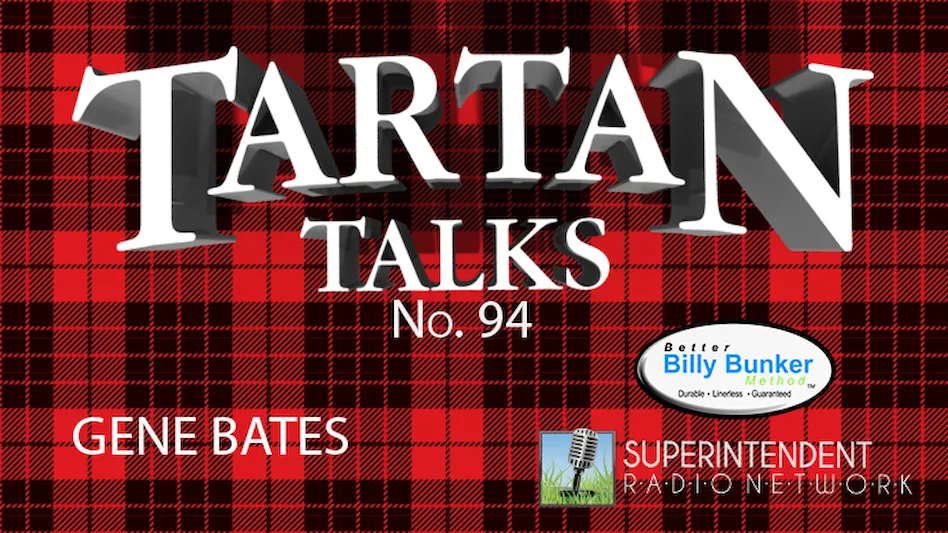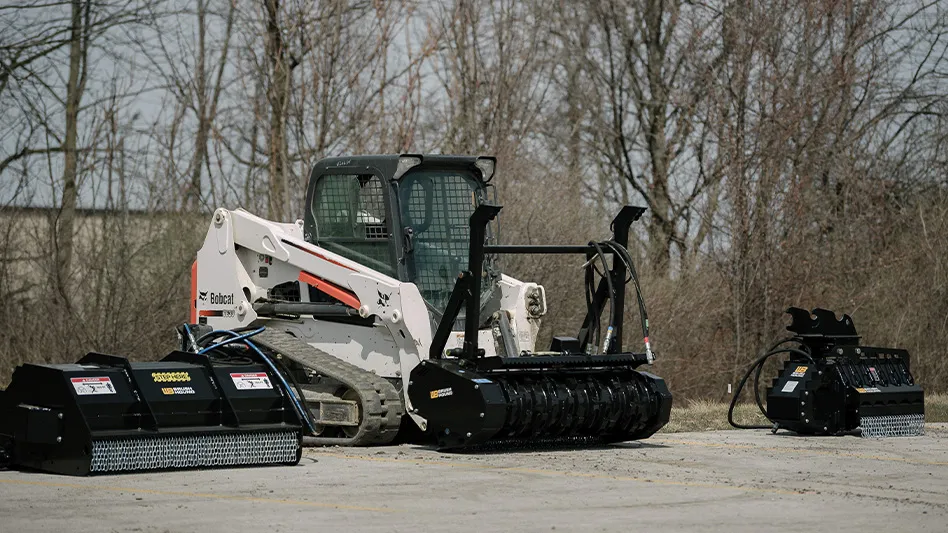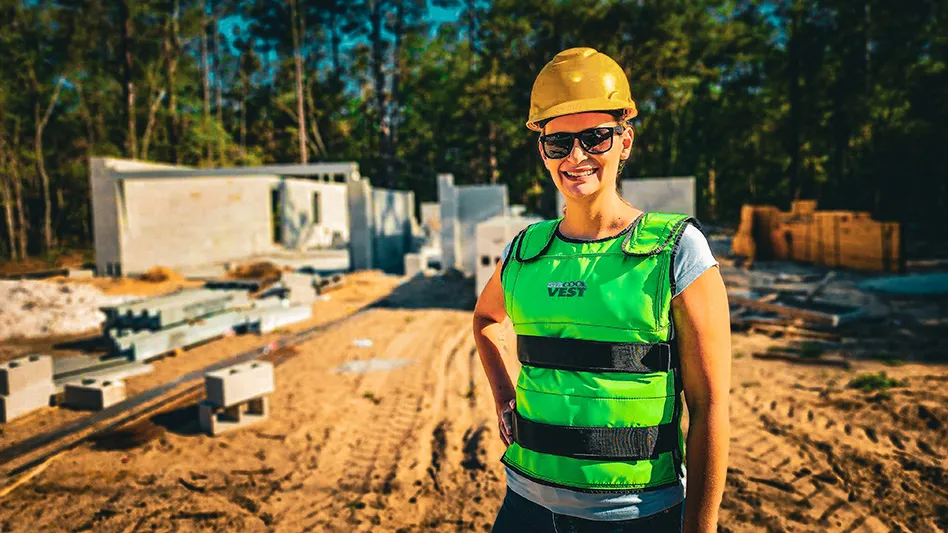“Everybody from West Virginia … God bless you all. It’s been a fabulous week.” —Jim Nantz, Broadcaster, CBS Sports
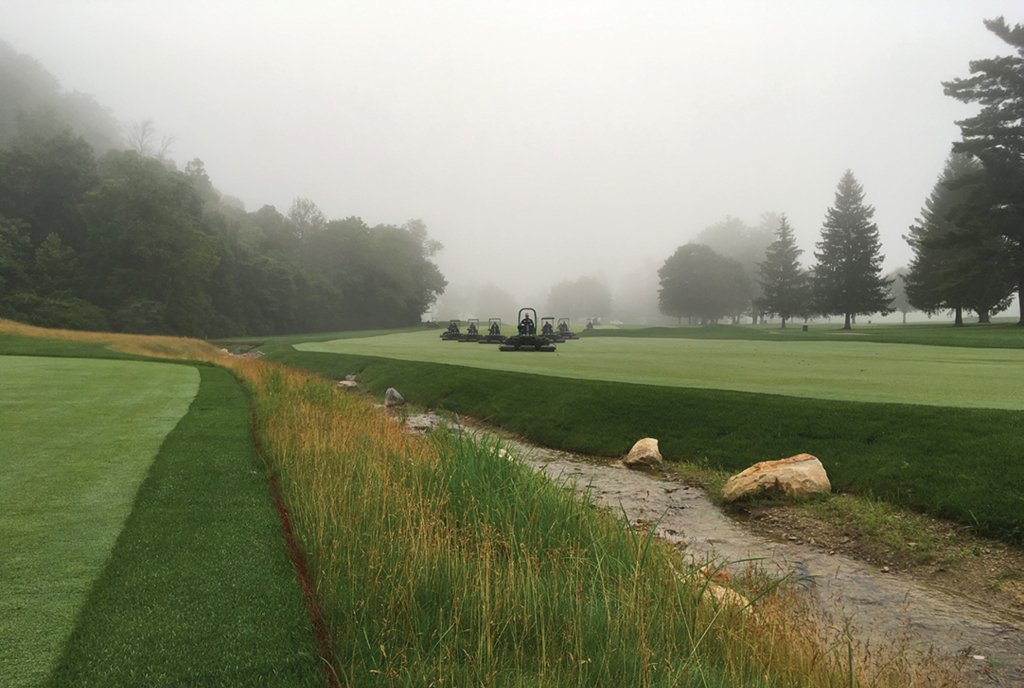
A group of hardened men from small towns such as White Sulphur Springs, Caldwell, Rainelle and Lewisburg wearing black polo shirts surrounded the nomadic broadcaster with a velvety voice and a Southern California-polished golfer just past 6 p.m. Sunday, July 9, 2017.
Jim Nantz was the emcee; Xander Schauffele was the champion. The group of men standing on The Old White TPC 18th green were the stars, a collection of workers ranging from 19 to 71 years old who sacrificed bodies, minds and time so their region could host a golf tournament and continue a trudge toward normalcy.
Watching from a grassy hill facing the sun, verdant turf, floral arrangements and a thumbprint pressed into V8 bentgrass, family, members, politicians and normal West Virginians applauded their efforts. A creek intersecting The Greenbrier’s golf grounds flowed behind the men’s backs. The stately and soothing 239-year-old resort represents many things to thousands of people. Above all, it endures peaceful and turbulent periods.
Howard’s Creek overflowed on June 23, 2016, causing instant and lingering devastation no human should be forced to witness. Simple lives became complex. Some lives ended.
The men standing on the green following The Greenbrier Classic turned the unexplainable into the playable. A day after the PGA Tour left town last month, resort guests who post scores in the 80s, 90s and 100s but help pay thousands of southern West Virginians’ bills, roamed the tees, fairways and greens of The Old White TPC and Meadows courses.
Returning to normal required a year’s worth of extraordinary feats. The men involved in rebuilding The Greenbrier’s golf courses will be remembered for much more than standing on a green with a famous broadcaster and PGA Tour winner.
“We were hit with a cannonball right in the gut.” — Jim Justice, Governor, West Virginia
The Patriarch
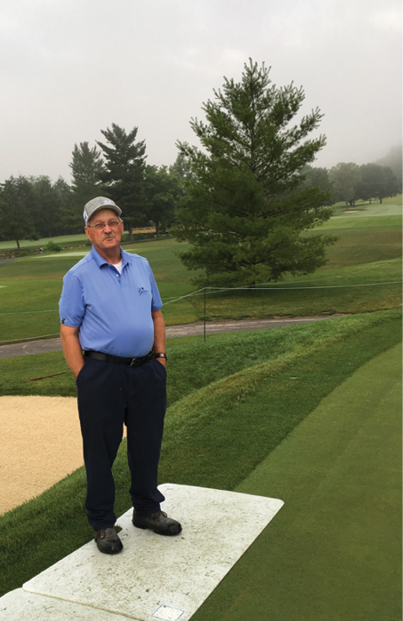
A quarter-inch, half-inch, two inches, a half-foot. Lightning, wind, hail. Elements above the West Virginia mountains rarely faze Leroy Foster, the longest-tenured member of the turf team. When rain halted the work day around 9 a.m. Thursday, June 23, 2016, Foster expected to be working Friday morning. “It was an ordinary day to me,” he says. “It was raining a little bit.”
A little rain, Foster later learned, turned into an abundance. After leaving work, Foster returned to the White Sulphur Springs home he owned for more than 40 years and took a nap. He opened his eyes a few hours later and found himself surrounded by three feet of water. Everything Foster owned, besides a couple of televisions, was destroyed.
Foster, a father of two, grandfather of seven and great grandfather of six, stayed with a daughter who lived in the area following the flood. His other daughter visited from Tennessee to help him complete paperwork and settle into a temporary trailer. He returned to work July 10, an uplifting day for his co-workers because internet and social media rumors suggested that Foster had died in the flood.
The beloved patriarch of The Greenbrier’s turf staff wasn’t only alive. He was ready to work again
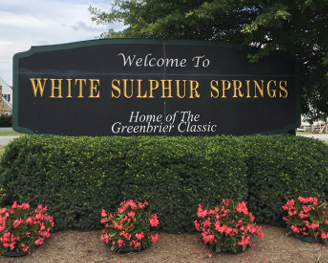
The 71-year-old Foster started maintaining the resort’s golf courses as a 23-year-old. Foster says a young man who wanted to stay in White Sulphur Springs had two options: cut wood or get a job at The Greenbrier. Foster started chopping wood on the hill with his father, James Warren Foster, but he quickly learned the job wasn’t for him. “That was a lot of hard work,” Foster says. “It was kind of a relief to get down here.”
Foster push mowed tees on his first day at The Greenbrier. He started on a Saturday, worked four hours and received a check for $5.96. He wanted to quit. “But,” he says, “My mom said, ‘You’re not putting gas in your car if you quit.’” Foster stuck around in 1969, just like he did in 2016 when he balanced rebuilding golf courses with repairing his life. Foster moved into a new home last September, as seed, sod and sand arrived at work by the ton.
He raised golf irrigation heads caked in mud. The job was dirty and demanding, yet Foster dug the summer and fall away, using nearly five decades of irrigation knowledge technology can’t supplant. If something remained intact below the ground, Foster found it, assuming he could see. “It was like a dust storm,” he says. “You couldn’t go anywhere. It looked like you were in the desert.”
The job proved tougher than mowing tees as a young adult. On the side, Foster continued maintaining graveyards. But he never considered quitting a golf course job he enjoyed more than cutting wood. “This is a home away from home,” he says.
The past year strengthened Foster’s affection for his outdoor office. He’s in no hurry to spend his days elsewhere. “I’m trying to get my 50 years in and I then I might decide to leave from here,” he says. “Right now, I feel pretty good. I’m getting around well.”
Dear Greenbrier Team,
Since June 2016, the Golf industry has watched in awe as you faced the monumental challenge to recover and rebuild after incredible destruction. The task was daunting and the stakes couldn’t have been higher, but your team took a deep breath, rolled up their sleeves, and got to work.
You set the bar high – you wouldn’t just repair the course, you would rebuild it. You could have focused on just one course, but instead you decided to renovate two. Crew members could have quit, fearing the hurdle was too high, but each of you committed to the goal and worked towards a shared vision of The Greenbrier reborn.
The truth is The Greenbrier is more than a golf resort, it’s the lifeblood of Southern West Virginia. Without The Greenbrier, nearly 2,000 people would be without work. Without the allure of pristine golf courses, millions in tourism dollars would be spent elsewhere. There was no time to waste. An ambitious plan was put into motion with all sights set on July 2017, and you had to succeed.
After long hours and never-ending checklists at the course, you would leave, but your work was not done. Some of you had damage to your own homes, and family and friends who also needed assistance. All around you, people were in need, and you rose to the challenge.
In the immediate aftermath, many looked at the course and doubted your goal. It seemed impossible that you could rebuild a golf course and have it ready for a PGA Tour event within a year. They thought it couldn’t be done, but you proved them wrong.
In the following months, debris was cleared, repairs were made, fairways were seeded, and The Greenbrier began to reemerge. The goal now seemed possible, but there was still so much more to do.
As the work continued, it became apparent that what you were doing was larger than preparing for a tournament. The Greenbrier would become a symbol of renewal, a beacon of hope, a testament to overcoming the odds, for those who lost so much.
Throughout this past year, you have shown us what true grit, determination, and teamwork can accomplish, and it’s truly remarkable.
You have inspired us all, and delivered on the greatest comeback this industry has ever seen.
Congratulations!
From John Deere.

“It’s a great story here and it’s a tribute to who they are and the type of people that live in this area. They are a resilient, hard-working, terrific group of people.” — Cal Roth, Senior Vice President of Agronomy, PGA Tour
The Go-to Guy
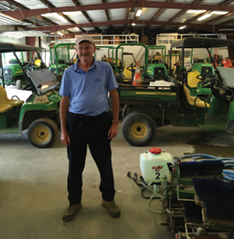
Curtis Persinger occupies a corner cubicle in a high-traffic area across from director of golf course maintenance Kelly Shumate’s office. Colleagues and vendors receive answers and comfort when they visit the space.
Persinger holds the title of shop coordinator for the golf and grounds departments. He’s the man who can fix, order or schedule almost anything. In a 30-minute stretch on a July afternoon, colleagues approached him about a noxious smell by the ice machine, a pair of exotic animals lurking near the dump and a new hire’s uniform needs. He provided instant answers.
Versatility allowed Persinger to order and track supplies needed to complete impromptu renovations on two golf courses. Natural disasters leave little time for planning. But, for 14 years, Persinger had been training for this moment.
A 37-year Greenbrier employee, Persinger also owned a dog supply and feed business from 1999-2013. The business weathered the economic slowdown and grew to a level Persinger never imagined, forcing him to choose between being the boss or working across from the boss. After three months of conversations with his wife, Persinger chose the latter.
“That business grew overnight and you would say, ‘Why do you ever give up a business?’” he says. “I was hiring people to help me, but I wasn’t the type that could stand back and say, ‘There it is. I will come back in a week.’ I still had to be involved.”
Arriving at the golf courses before 6 a.m. and filling business orders until midnight weakened Persinger. He suffered a heart attack in 2014. “It was because of my lifestyle for 14 years,” he says. Persinger recovered, and by the summer of 2016, he was multitasking again, displaying the wherewithal required to schedule hundreds of deliveries. Construction on The Old White TPC commenced July 27, less than a year before the 2017 Greenbrier Classic. “I was definitely under some stress,” Persinger says. “But by dealing with our vendors, 99 percent of the time I was able to be successful.”
The days were different when Persinger started working at The Greenbrier’s bag room in 1980. A winter strike led to Persinger and other non-union employees receiving opportunities to help rebuild golf maintenance equipment. Persinger says his “ability to turn a wrench” impressed superintendents and foremen, and he landed the first available full-time maintenance position after the strike was settled.
His regular assignments included mowing and irrigating the Greenbrier course, which hosted the 1979 Ryder Cup. Persinger relished rainy days because they offered chances to grease, oil, adjust and sharpen equipment. He further demonstrated his mechanical talents when the resort implemented a formal golf course equipment maintenance program in 1991. The Greenbrier now has three seasoned mechanics for 54 holes: Persinger, Roy Young and Ray Bonds.
The resort has flourished and struggled depending on the economy’s condition, but Persinger says he knew by the mid-1980s he was likely a lifer. Neither a heart attack nor a historic flood deterred him.
“There was an older gentleman who worked here in the ’80s and early ’90s and after he retired they hired him back part-time,” Persinger says. “He always said that once you got your feet wet in the dew, you couldn’t leave. I think about that.”
“You guys have a lot to be proud of. A hell of a lot to be proud of out there on both places, the Meadows and The Old White. You should really, really think about it as you are riding around. You should think about what you pulled off in a year. It’s really unheard of.” — Josh Pope, Superintendent, The Old White TPC
The Crew
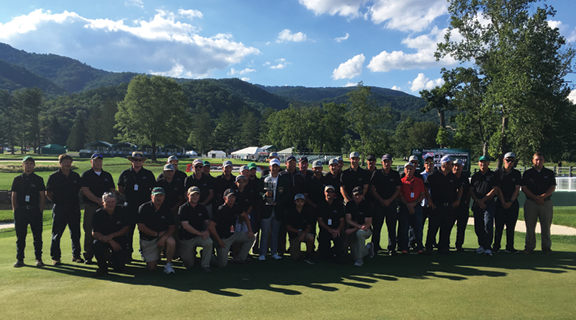
Phillips Burns calls himself a “detail man,” with responsibilities ranging from cutting cups to polishing markers and signs on the Meadows course. His work prevents an elegant property from giving guests shaggy impressions. Burns notices mismatch swaths and blurry splotches customers will never recognize.
He observed unprecedent disorder last summer: bridges and signs transported hundreds of yards, water-logged tunnels, zapped pumps. No images forced the “detail man” to ponder the big picture like empty golf courses. “When the golfers start coming back in,” Burns says, “that’s my paycheck.”
The return of golfers motivated Burns, along with veteran co-workers Billy Ridgeway, Ross Feury and Jeff Church. Combined, they have spent more than 100 years at The Greenbrier.
A way of life hinged on rebuilding the golf courses. Once southern West Virginia enters the blood, thoughts of a life elsewhere subside. Less than 36,000 people live in Greenbrier Country and the closest major metropolitan area, Washington D.C., is 250 miles away. The daily lifestyle perks contrast urban retail, dining and indoor entertainment options. “You have people here that will jump in to help you,” Church says. “Everybody knows everybody and everybody will lend a helping hand.”
That doesn’t mean life is easy. Church is approaching 30 years at The Greenbrier. He worked a decade in the bag room before earning a job on The Old White TPC, where he says, “you have to know different trades” to develop longevity. Ridgeway spent 34 years in the resort’s room service department before joining the turf team eight years ago. “I just wanted to be outside,” he says. Feury was a logger before landing a golf course maintenance job prior to the inaugural Greenbrier Classic in 2010. “I had put in for the warehouse,” he says. “Then the PGA Tour came along and they asked if I would be interested in coming down here. I had no idea what it would be like. I tried it and liked it.”
The flood increased responsibilities and tested patience. Preparing The Old White TPC fairways for seeding involved Fraze mowing, a form of extreme turf scalping most workers had never heard of until last year. On the worst days, they sacrificed sight to preserve a way of life. “A lot of times you couldn’t see the mower or the trailer because of the dust,” Feury says. “It was just like a fog.” Even the strongest mountain fog, though, doesn’t discolor eyes. “Your eyes looked like they had been a week without sleep,” Ridgeway says. “They were just beat red.” Ridgeway and co-workers used plastic to create protective canopies. The ingenuity failed to improve conditions.
Winter provided time to rest and cleanse. But the work intensified in March. Days became frantic in June as crews rushed to beat the Greenbrier Classic countdown clock in the breakroom. The Meadows course was also on the clock.
Pressure? Imagine family, friends and neighbors depending on your dawn-to-dusk efforts. “If it wasn’t for this place, the town would be a ghost town,” Church says.
Handling pressure brings immense fulfillment. The Greenbrier unveiled two revamped courses to resort guests Monday, July 10. Career legacies rest on that turf.
“We have created something special,” Burns said. “We took it from dirt, rock, mud and trees to a beautiful renovation.”
“We were in business when Hugo hit. Everybody was warned. We knew it was coming and it hit, and it was devastating and there were golf courses destroyed. But people could prepare for it. This was a one-day thing thrown on them. You couldn’t prepare for it. This one was so sudden and so devastating to this one little community.” — Turner Revels, President, Revels Turf & Tractor
The Intern

So, what happened the first time you lived away from home because of work? Bet Drew Greene’s experience beats other turf tales.
Greene had no roommates or summer social life in 2016. The office doubled as his apartment. He was 20 and living in The Greenbrier’s turf care facility, 800 miles from his Jackson, Miss., home.
When the bosses told his older co-workers to head home the morning of June 23, 2016, Greene retreated to the apartment. He rested for a few hours, got hungry and made a soggy 10-miute drive to Lewisburg to grab a pizza. When Greene returned to his apartment, somebody noticed the left blinker light on his car wouldn’t stop. He cranked the engine. Nothing. The engine was likely fried because of a lightning strike. Stuff happens.
Really bad stuff also happens. Deep water covered Route 60, the two-lane road connecting Interstate 64 with White Sulphur Springs. The turf care facility sits on the east side of the road. Greene couldn’t move his car to higher ground because, well, it still wouldn’t start. He called his mother, but not in a state of panic. He felt a son’s obligation to gently alert his mother of an unusual situation.
Greene watched the water rise with a few co-workers, including shop coordinator Curtis Persinger who exuded calm amid chaos. He also listened to the radio in Persinger’s truck.
“I got into his truck and the radio station was saying, ‘Get a helicopter to whatever address. There’s a person on top of the roof. We have to get her out,’” Greene says. “I’m asking Curtis, ‘Is this in downtown?’ He said, ‘You think we got it bad. People are trapped in houses.’ Then you hear houses are floating down Highway 60 on fire. Water got in attics. It brought it into perspective. Holy cow. It wasn’t just me. It was much worse than where we were.”
Feeling helpless, hopeless and homesick, Greene quietly followed the lead of his bosses: director of golf course maintenance Kelly Shumate and The Old White TPC superintendent Josh Pope. “This whole time I was just trying to hold it together,” he says. “I’m this young kid, the intern living here and I didn’t want to get in anybody’s way. Follow them. They’re my bosses. I’m not going to try to be the hero here. I was fearful of my life, but I stayed calm for the most part.”
Four weeks later, Greene trusted his bosses again. Uncertainty following the flood changed his internship. The PGA Tour wasn’t coming to The Greenbrier in 2016 and his bosses weren’t around because they were developing plans to rebuild two golf courses. Greene, the only turf intern last summer, was counting the days until the start of his junior year at Mississippi State University when Shumate and Pope approached him on The Old White TPC’s battered first fairway. The duo wanted Greene to extend his internship.
“Initially, I was kind of turned off by that,” Greene says. “I was only 20 years old. I had never been to a high-end golf course. I didn’t know the importance of a renovation. I didn’t know the magnitude of what I was looking at. I was just really spaced out, I guess. That’s one way to describe.”
Greene spoke with people he respected, including Persinger and The Old White TPC assistant superintendent Greg Caldwell. He called former bosses. He learned he was sitting on a rare opportunity. “I realized there was no option,” he says. “I had to stay.”
“This was unbelievable,” he adds. “Construction experience is automatically a step above just normal golf course experience and this was not just a construction experience. This was disaster relief cleanup and a restoration.”
Instead of playing frisbee and attending SEC football games with friends last fall, Greene directed trucks to dumping locations and checked gravel and sand depths on green mixes. He worked alongside veteran project managers from McDonald Golf. He felt removed from the college loop, but he developed bonds with the prideful – and often comical – West Virginians on The Greenbrier crew.
Greene returned to the resort last month as a Greenbrier Classic turf volunteer. He was overwhelmed by seeing former co-workers and the courses.
“I really don’t know how to describe it or put it into words,” he says. “I’m kind of a short-timer. I was only here until Thanksgiving. They really busted it this past spring and I wasn’t here. I don’t know if I deserve any credit. I was basically following the leaders. I knew as long as I did what they told me to do and worked hard that it would be OK.”
“Every place has pride. But West Virginia is different. We don’t fit in the Southeast, the Northeast, the Midwest. We are Appalachia. We kind of celebrate that in certain ways. We’re liberty-loving people who like to be free. The resilience of this staff was no surprise to me. It might be a surprise to other people. The talent level of that staff and what they can do is incredible.” — Ken Tackett, Rules Official, PGA Tour, West Virginia resident
The Brothers
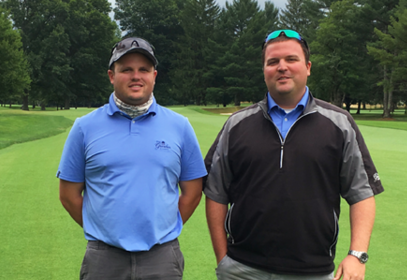
Everybody in White Sulphur Springs knows Nate and Carrington Bryant. Their father, Jeff, is the superintendent of Greenbrier County Schools. Their mother, Teresa, is an elementary school music teacher.
And how’s this for an only in small-town America occurrence? Jeff served as the principal when Nate and Carrington attended Greenbrier East High School. Nate and Carrington are now golf course superintendents at the largest employer in town.
Nate, the 30-year-old superintendent of Greenbrier course, is the big brother. He left home to chase a football dream, playing at a pair of small colleges, Malone University in Canton, Ohio, and UVa-Wise in far eastern Virginia. When football dreams faded, he turned his summer job as an hourly worker at the private Greenbrier Sport Club’s Snead course into a newfound career dream. He enrolled at Horry Georgetown Technical College in Conway, S.C., to become a trained superintendent.
Carrington, the 27-year-old superintendent of the Meadows course, completed two years at Marshall University, one of West Virginia’s two big state schools. After his sophomore year, Carrington returned home to work at the Snead course and experienced a revelation while mowing collars on the 12th hole one morning: “I had this aha moment, ‘This is fun. Let’s do this.’” A second Bryant enrolled in Horry Georgetown’s turf program.
The brothers landed their first full-time assistant superintendents positions at The Greenbrier, with Nate joining the staff in 2010 and Carrington in 2012. They needed little introduction to the clientele and expectations. Jeff and Teresa are musicians and they often brought their sons along when performing at the resort. “They would drop us off at the arcade and we would go bowling and do stuff like that,” Nate says. “I always wanted to come back because it was a good place. When the opportunity came, you couldn’t really pass that up.”
Nate and Carrington understand The Greenbrier’s relentless turf pace. When fully functioning, the resort supports three upscale golf courses, a PGA Tour event and NFL training camp. Nate and Carrington helped build fields the New Orleans Saints used from 2014-16. The Houston Texans are training at the resort this summer.
The past 13 months presented the biggest challenge of their professional and personal lives. Nate juggled leading the maintenance of the 12 open holes on the Greenbrier course and helping his brother’s crew rebuild the Meadows course while repairing his own life. The flood destroyed his O’Connell Street home in downtown White Sulphur Springs. The house, the last structure hit by water on the street, is being rebuilt as part of the Neighbors Loving Neighbors charitable efforts, and Nate and his wife are living in Jeff and Teresa’s garage apartment until the home is finished. Nate downplays his ordeal around co-workers.
“The guys would ask, but there were so many people affected,” he says. “I just didn’t feel like mine was any different. I was probably a lot luckier than a lot of people were. I gave them updates. You never really try to bring it up.”
Staring across from his brother during an indoor conversation, Carrington becomes emotional when describing the plight Nate and others faced. “You take everything for granted and people just lose everything,” he says. “Wow. You feel lucky. Maybe a little bit lucky with the amount of people that were affected and I wasn’t.”
Rebuilding golf courses are Nate and Carrington’s contribution to their community. Nate will play a key part in the Phil Mickelson-directed renovation of the Greenbrier course. The largest employer in the county will boast three refurbished courses when the renovation is completed.
“A sense of normalcy is a tremendous motivator,” Carrington says. “I’m not sure what normal is, but I guess we might find out one day.”
“To our staff, I’m not going to get into it. I get emotional. You know how I feel about each and every one of you. So, thank you.” — Kelly Shumate, Director of Golf Maintenance, The Greenbrier
The Assistants
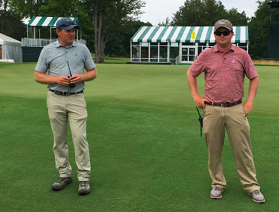
Chris Anderson hiked one trail and never removed the kayak from below his deck in his first 15 months as a West Virginia resident. The flood ruined outdoorsy plans.
Anderson, 33, left his native Ohio in April 2016 because he wanted to help host a PGA Tour event. A job as The Old White TPC assistant superintendent presented an opportunity to obtain tournament experience. “It was the whole reason I moved to West Virginia in the first place,” he says. The mountains, rivers, streams and golf courses were intriguing diversions.
Greg Caldwell, 31, joined Anderson as The Old White TPC’s other assistant superintendent two months later. The job offered a chance to move a young family closer to its Virginia roots. He ended his stint as an assistant at Colonial Country Club in Fort Worth, Texas, by working the DEAN & DELUCA Invitational six weeks before the scheduled start of the 2016 Greenbrier Classic.
“I kind of had a plan in my head that I was going to finish the tournament at Colonial and come back and do another tournament and then kind of ease into the fall, almost like a glorious homecoming for us,” says Caldwell, who hails from Narrows, Va., 50 miles from White Sulphur Springs. “Our homecoming kind of got spoiled a little bit with this flood. I was looking forward to slowing down a little bit after that tournament. And that all changed.”
The first year on the job proved more grueling than glorious for both assistants.
With family and friends in a neighboring state, Anderson immersed himself into the rebuild. He spent the early stages of his turf career in Columbus, Ohio, where he served as an assistant superintendent and held part-time jobs ranging from winter retail work to a gameday position on the grounds crew of the city’s Triple-A baseball franchise. Experience working multiple jobs helped him handle construction demands and deadlines. And the rebuild helped him avoid the solitude associated with uprooting.
“I’m used to working a lot,” he says. “The hours don’t really bother me, especially when I didn’t really have any friends and family down here, so it was actually better. I wasn’t spending as much time by myself.”
Caldwell had never grown in a fairway or green or watered 50 acres of sod until the past year. He also had never spent so much time away from his wife, Desiree, and 20-month-old daughter Eleanor. Working alongside contractors under tight deadlines meant days exceeding 12 hours. “I tried not to take too much of it home,” Caldwell says. “There were times it was frustrating. I wanted to go home. I wanted to go home bad to see them.”
Anderson and Caldwell are curious about post-construction life at The Greenbrier. Will Anderson adjust to living in a state with fewer residents than the Columbus metropolitan area? Will Caldwell find a desirable work-life balance?
Both know they achieved something unexpectedly big. By being dependable and adaptable, they aided a rebuild with few industry peers.
“I don’t know if it gets much tougher than this, turning a golf course around in eight months or whatever it was for a tournament,” Caldwell says. “What it looks like right now is pretty awesome.”
“The sun doesn’t always shine in West Virginia, but the people do.” — John F. Kennedy, 35th President, United States of America
Bonded by Loss
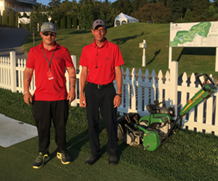
Kenny Willis was a coal miner – until he fractured his neck in a fire truck accident. He then lost his home a few years later. Nathan Kirk was a typical young adult who played basketball, football and golf in his spare time – until he lost his home.
Fifteen years separate the pair. But they are forever bonded by a flood.
The pair watched water destroy their homes last year. Neither Willis, 37, nor Kirk, 22, possessed flood insurance. Willis lived in the mountain town of Rainelle; Kirk lived in the adjacent mountain town of Charmco.
Willis, a 17-year veteran of the local fire department, has seen plenty of devastation. “But I never dreamt I would personally be affected,” he says. Kirk figured his native state was positioned to avoid disasters. “I always felt like West Virginia was a safe zone,” he says. “You don’t really have to worry about tornadoes or anything like that up here. The thought of losing my house never really occurred to me, never crossed my mind. First time anything like that dramatic has happened to me. It’s definitely life-changing.”
Willis, who has a young daughter, stayed with his wife’s grandparents for a few months. Kirk lived in a tent before shifting to a camper as he mulled his next step. They were stunned and staggered, yet determined to repair their lives.
They started riding to work together because Kirk also lost his car in the flood. The pair learned they had plenty to discuss beyond hardship. Willis and Kirk worked on the Meadows and Greenbrier courses, and they shared a zest for golf course maintenance. “For me, it was almost like a vacation to get your mind off the emotional stuff you had going on outside of work,” Kirk says.
The pair received significant support. Co-workers donated money and clothes while a prominent golf industry company provided additional assistance. Kirk also helps maintain the football fields, and he says the New Orleans Saints gave them clothing when training camp started last July.
Their role in rebuilding the Meadows course involved constructing sod-stacked bunkers by hand, a methodical and exhilarating process. “Probably one of the hardest things I have ever done,” Kirk says. “But probably one of the funnest things I have ever done.”
Life has improved off the course. Willis and his wife are preparing to buy a house. “It’s away from the water,” he says. “That’s the first thing we looked into.” Kirk is expecting a child in November and he’s supplementing his Greenbrier income with evening landscape work as he rebuilds his home. “The flood kind of made my find myself,” he says.
Willis and Kirk envision turf as major parts of their respective futures. Willis earned an online turfgrass certificate from the University of Georgia on June 22, 2016, less than 24 hours before a flood altered his life. He wants to work his way into an assistant superintendent position at The Greenbrier. “I have fallen in love with this place,” he says.
Kirk is in the process of applying to two-year turf schools. He’s fascinated by sports turf, and harbors dreams of maintaining an NFL or major college football field. “I hope my experiences here at The Greenbrier lead me somewhere in life,” he says. “I’m dedicated to sports turf. After everything that happened last year, I will never doubt myself again.”

Explore the August 2017 Issue
Check out more from this issue and find you next story to read.
Latest from Golf Course Industry
- Devising safer landings
- SiteOne adds Durentis to product offerings
- Resilia available for purchase in Hawaii
- What can $1 million do for expanding the industry workforce?
- Captivating short course debuts on Captiva Island
- Wonderful Women of Golf 35: Carol Turner
- The Andersons acquires Reed & Perrine Sales
- Excel Leadership Program awards six new graduates


